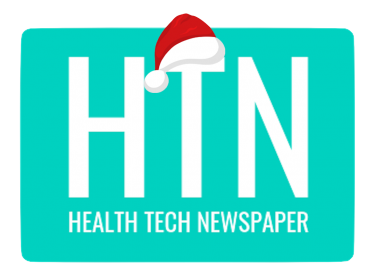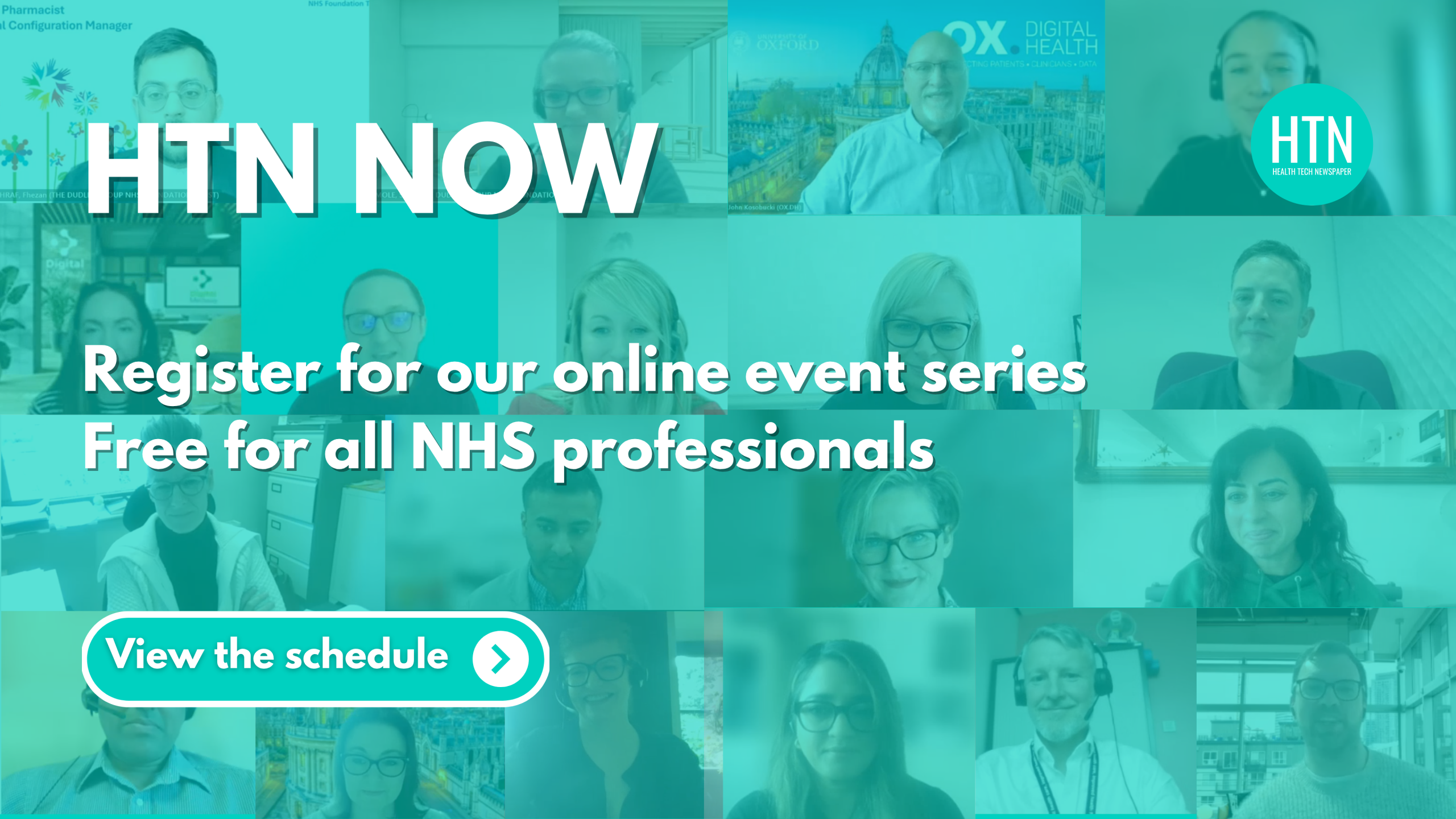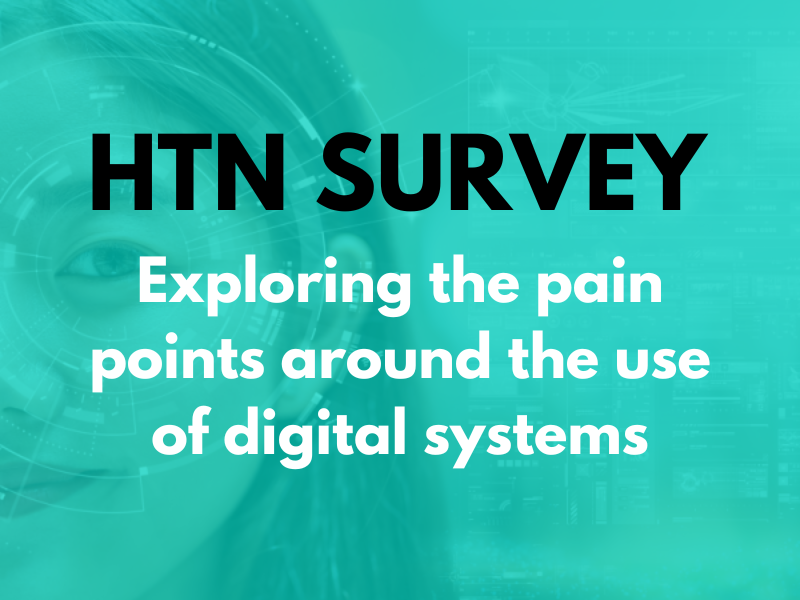For a recent HTN Now webinar we were joined by experts from Ideal Health to discuss ways to unlock the full potential of an EPR and achieve real, impactful productivity and performance gains through strategic optimisation.. The session looked at ways to work smarter and enhance the user experience in order to support better patient care, delving into what optimisation looks like and the benefits that come from it.
Panellists from Ideal Health were made up of Nick Robertson, training & change director; Tara Athanasiou, advisory & strategic practice director; and Kate Mansfield, practice director. They each shared their advice and provided real-world case studies to demonstrate what good optimisation looks like.
EPR optimisation: An overview
The presentation began with Tara giving a brief overview of the webinar: “We’re going to focus on EPR optimisation, looking at it from a really practical perspective to help NHS organisations with driving productivity savings. We’ll be exploring how you can make it work for you, both from a system perspective and also crucially from a user perspective.”
Some of the key elements that Tara promised to go over included why EPR optimisation matters, the benefits of optimisation, how to take an optimisation approach, when to start thinking about optimisation and the optimisation lifecycle as a whole.
Key aspects of optimisation
Starting with why optimisation matters, Tara explained, “It’s all about improving the EPR to make it more usable and functional, so you get the maximum amount of value out of it. It’s not just looking at the system itself, it’s about looking at interoperability with other systems as well, such as ambient AI or your Shared Care Record.”
She emphasised the importance of the user experience, patient safety and staff satisfaction and how optimisation can help improve each area. “You don’t want people getting so fed up that they’re coming up with workarounds and not using the systems in place, so you need to consider data quality improvements and the ways information is being captured for reporting purposes.” Productivity savings are then a byproduct that comes from all these improvements, Tara said, allowing you to reduce the administrative burden.
In terms of knowing when to optimise your EPR, Tara outlined, “Often when we think about the EPR lifecycle, we think about it in quite a linear way. We go through our business case, then implementation and then optimisation is the piece that comes at the end.” She explained that the actual work for optimisation should always come at the end of that process but that thinking about optimisation and the planning around it needs to be considered from the outset. “When you’re starting to pull together your business case, you’re thinking about the resources and the funding that’s required and you’ll consider those elements right up to the implementation and stabilisation phases. But the phase after that also needs to be factored in, because it’s really important, particularly from a resourcing perspective.”
Tara spoke of the risk of fatigue if you don’t consider all the different phases from the beginning. “People get change fatigue at the end of the implementation phase. So, thinking about how you’re going to keep that momentum going will allow you to create a constant cycle of knowledge sharing instead of cramming everything into the initial go-live. It’s very much an ongoing piece of work that lasts for the duration of the EPR contract.”
When touching upon some of the best approaches for targeting optimisation, Tara noted the importance of baselining your current position. “There’s a plethora of different interventions that you could put in place around optimisation. Clearly you can’t do all of them. They need to be targeted in the right places at the right time to give you the maximum value and impact.” She suggested looking at national and local datasets to help identify areas of concern where you can prioritise your efforts and develop an optimisation roadmap. “Once you have that in place, it’s time to develop and target those interventions and enhancements and then measure the impact.”
Baselining your current position
Tara then passed over to Nick, who explored the concept of baselining in further detail, explaining how this could be anything from looking at system enhancements to considering new functionality and additional pathways. Other key areas he touched upon included developing training, access and communication. “I would start by looking at usage, such as low and unexpected usage patterns,” he said. “Who hasn’t logged in for the last three months? Who logs in once at the beginning of their shift and never removes their smart card until the end of their shift? They’re the things you want to start picking out.”
Nick then highlighted the importance of leveraging data analytics. “Each EPR will have this and you might be able to build your own dashboards. Then think about who’s actually reviewing that information. How regularly? What are you looking for? What are the trends you’re expecting to see? This will help with your benchmarking when you’re doing your baselining.”
Next, Nick suggested looking at performance data before, during and after go-live, listing RTT pathway completion, outcome reporting, clinics, appointments, data quality and statutory reporting as key metrics to assess. “It’d be great to do a key documentation review,” he added. “Go back to your business case and check the benefits that you called out then to see if you’re doing better than you were. And if not, why not?”
Priority areas for optimisation
Diving further into how to optimise your EPR in the most effective way, Nick shared what he considered to be the main areas of focus, starting with identifying which processes need examining first. “A starting point might be looking at your requests for change as there might be some that have been missed because they’re too big to address quickly. Look through this list with a fresh pair of eyes. If you try and fix everything at once, you’re probably not going to fix anything effectively. So be strategic and be specific about what you’re trying to target.”
He emphasised the importance of listening to feedback and talking to staff directly to identify areas that are causing the most frustration. “Focus on the aspects that are going to impact the largest number of staff,” he added. “If there’s something that’s driving inpatient nurses crazy, focus on that and get that fix communicated to make their lives easier.” Nick suggested reaching out to different groups once a month to find out what their unique challenges are, noting that, “people tend to stop logging issues if they’re not getting resolved. So, if you regularly reach out and listen to your staff, they’re more likely to tell you what’s going on.”
He then touched upon the problem with using workarounds, stating, “Quite often with EPRs, there’s more than one way to do something, but people don’t realise that using a workaround can impact the reporting on the back end.” In order to avoid this, Nick said that watching how people are using the system should help to identify any workarounds being used, so you can circumvent them and stop bad habits from creeping in.
On interpreting the data provided through analytics tools, Nick stressed the need to act with caution. “Your analytics might state that your average clinician is taking nine clicks to place an order, but there’s also one clinician who’s taking 12 or 15 clicks,” he said. “Don’t rush into thinking they’re not using the system efficiently. If they’re placing an order for complex infusions or radiology orders, they will take longer and it will take more clicks. So, you have to be a little bit careful how you interpret that data.”
Targeted training and initiatives
Another important part of optimisation is making sure you have the correct training and initiatives in place to help staff when it comes to doing things the right way. “Look at your new starter training,” Nick said, emphasising how this can help to understand what info is being delivered to staff. “For example, are they being given the SOP to review so they can understand how the department works? If not, why?”
He also highlighted how continually reviewing the EPR configuration, workflows and usability could be beneficial, noting, “It might have been great when it was being designed and tested, but how does it perform in day-to-day life? Is it still working for you and what can you do to make it more appropriate?” Looking at the system performance is also key here, particularly when it comes to processing speed and the infrastructure being used, such as WiFi strength.
Nick then touched upon compliance and clinical safety, adding, “A good EPR should help with information governance. You should be able to look at who’s accessing whose records, for example.” He highlighted how effective communication and engagement can help to improve optimisation: “All these activities need to be communicated effectively to drive engagement. Have a plan in place. Make sure once you’ve defined what you’re going to do and who your target audience is, that you have that engagement and comms plan outlined already.”
Real-world example: Dermatology clinic optimisation
Next, Kate took us through some real-world examples of optimisation that the team at Ideal Health have worked on over the years, sharing “how targeted interventions can unlock benefits in existing systems”.
The first example that Kate shared took place in an outpatient dermatology clinic at a large hospital. “After initial deployment, the trust was concerned that not all departments were using the system effectively. So, our team worked with the trust to identify which clinics to target, with dermatology being one of them. Clinicians were spending too much time on documentation and this was partly because they were unaware that there were shortcuts and customisable workflows available, but also because some of them were still relying heavily on paper even after the go-live date.”
The team also noticed technical inefficiencies within the clinic, such as unreliable printers and a lack of computer access. “One of the biggest issues that they were facing in dermatology was that the staff weren’t capturing the procedure codes, which was actually having financial implications,” Kate said.
After some key interviews with stakeholders to better understand some of the issues they were facing, a small team from Ideal Health provided “at-the-elbow support in line with the SOPs”. Kate explained, “Our team sat down with the consultants during the patient consultations – with patient permission, of course – and offered support to the clinicians. During that time, we were able to show them how to customise the EPR, such as setting up favourites for orders or coding, setting up patient lists and auto text to try and streamline the documentation. All of this led to more streamlined workflows.”
The team was also able to identify areas where configuration could be improved, Kate said, including identifying a different procedure component that would help with the capture of procedure codes and setting up order sets and templates for documentation. “They were also able to feed back technical issues to the EPR and the informatics team,” she shared.
Over a two-week period, the clinicians reported “greater confidence in using the workflows and the trust found that staff responded very positively to the whole exercise, noting a reduction in documentation time, improved efficiency and improvements in usability”.
Real-world example: Emergency department optimisation
For the second case study, Kate highlighted the optimisation that took place in a trust’s emergency department (ED). “They found that adoption was poor in ED and this was partly due to the fact that uptake and training had been low initially. We had a team of associates who conducted a very detailed analysis to identify the root cause and found that ED was still very heavily reliant on paper, workflows varied by specialty and documentation was inconsistent.”
Kate added that staff also felt very frustrated by lengthy logins and paper-based referrals and felt that they received a lack of training and support. After analysis and observation, the team at Ideal Health introduced a number of new initiatives, including KPIs for record completion, a clinical coder to try and drive compliance, real-time blood results endorsement and mobile access. “Other proposals centred around having a super-user network, classroom training and smart card single sign-on. And they also designed standardised templates for discharge and referrals,” Kate explained.
As a result of these interventions, “the trust found that they were able to standardise and digitise a lot of the paper processes, such as triage, referral and discharge. The data capture quality increased significantly, reducing audit and legal risk. Staff began to report less duplication and reduced paperwork.”
Kate concluded by sharing how each case study has highlighted “not just the productivity gains that optimisation can bring, but also efficiency, patient care, financial benefit and an improved user experience.”
Measuring the success of optimisation
On measuring success, Nick reiterated the need to define which areas need optimising and using analytics to benchmark progress. Kate then recommended looking at both qualitative and quantitative metrics and identifying early on what success means to your organisation. “It might be reduced documentation time or increased use of structured data to improve clinical accuracy. There are lots of things you can track, but identifying which metrics are most important at that time will be most beneficial.”
For Tara, your goals for success must resonate with everyone in the organisation and everyone should take ownership of a successful optimisation. “We know that there’s a correlation between digital maturity and improved outcomes and performance. So, that should be an overarching goal,” she said.
We’d like to thank Kate, Tara and Nick for joining us and sharing their insights into this topic.





